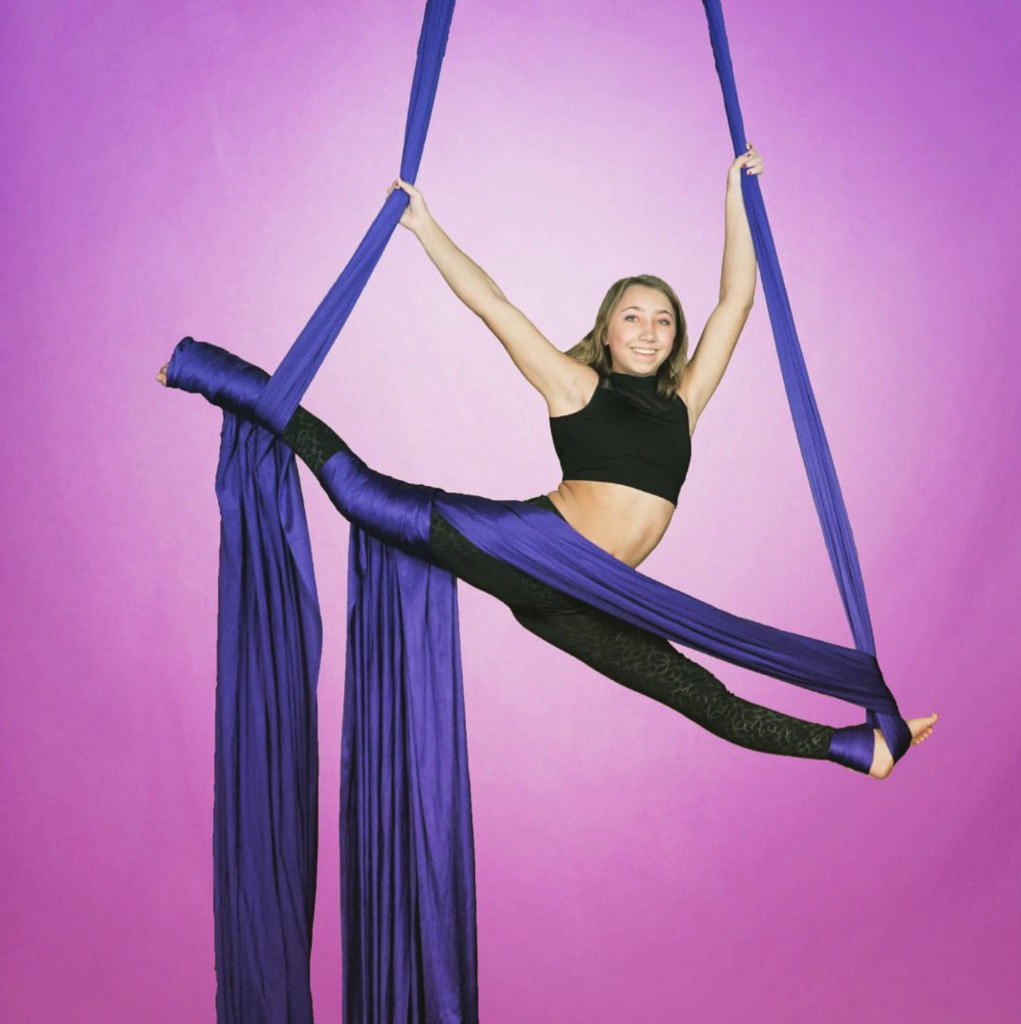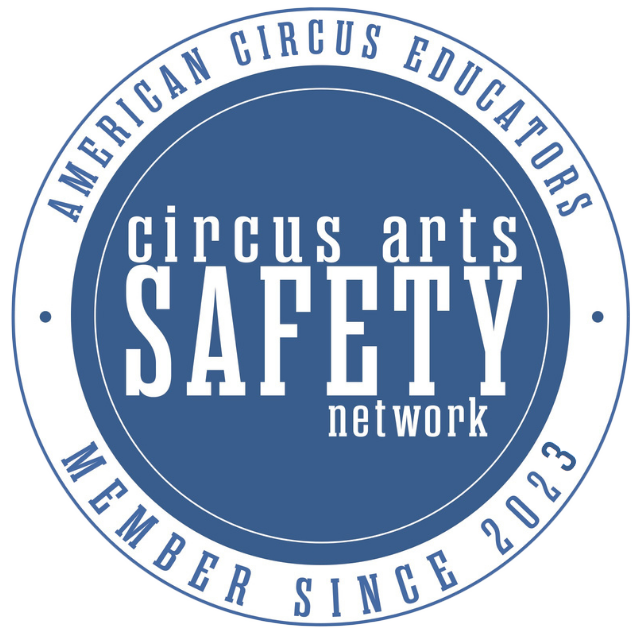Read on for everything you need to know about planning and installing your aerial dance home rigging.
Forewarning: while this isn’t intended to scare, the reality is aerial dance is a high-risk sport. Unfortunately, most don’t take the necessary precautions and sadly, we see and hear of students every year who are injured. This has ranged from sprained ankles to broken backs. There is a way to do home rigging safely. The catch? It’s expensive.
Unsafe Aerial Rigging
First, let’s discuss some examples of unsafe rigging at home.
– Using eyebolts that screw into a ceiling joist or stud
– Rigging from trees, decks, stair rails, or non-load supporting beans
We once had a 9-year-old student practicing on bed sheets hung by the stair rails. Sadly, the railing failed, and she suffered extensive injury from falling directly onto her head. She was “only” 4 feet off the ground.
While they may seem secure, these types of rigging methods can easily fail as they aren’t rated for aerial loads. For aerial acrobatics, a rig point must have a load capacity of no less than 2000 lbs. So much more than a person’s weight comes into play when one is spinning, climbing, dropping, sliding, etc. Discover how dynamic loads impact aerial movement.
Safe Aerial Rigging
 So, how do I know if my structure can support aerial loads? A structural engineer is the only person who will be able to assess the structural integrity and safety of a potential aerial point. We do not do any consultations as we are not structural engineers. If you want an aerial point in your home, the first thing you need to do is hire a structural engineer to assess the space. After the assessment, you may need to hire a contractor to complete any additional reinforcement as recommended by the engineer. As you might imagine, it is hard to estimate a cost, but generally you’re likely looking at thousand(s).
So, how do I know if my structure can support aerial loads? A structural engineer is the only person who will be able to assess the structural integrity and safety of a potential aerial point. We do not do any consultations as we are not structural engineers. If you want an aerial point in your home, the first thing you need to do is hire a structural engineer to assess the space. After the assessment, you may need to hire a contractor to complete any additional reinforcement as recommended by the engineer. As you might imagine, it is hard to estimate a cost, but generally you’re likely looking at thousand(s).
Aerial Dance Equipment
Once you have the aerial point safely worked out, you are ready to purchase equipment. You want to make sure you’re purchasing from a reputable aerial dance company (not Amazon, etc!). One such company is Aerial Fabric Acrobatics. Aerial Cirque Over Denver uses all equipment from Aerial Fabric Acrobatics. The equipment and silks from Aerial Fabric Acrobatics has all been tested to ensure it is safe for aerial loads.
Additionally, you will need a rated crash mat. The best mats are gymnastics crash mats, at least 4 inches thick. We use 8-inch-thick mats at the studio. This is best if you are working on larger drops and more dynamic tricks.
Finally, if you chose to install an aerial dance point in your home ALWAYS practice with supervision!!! This is extremely important for safety, if you or your child were to become entangled. Entanglement can cause serious injury and potentially death. It’s truly terrifying to think about being stuck by a body part, dangling in the air (potentially upside down), unable to free yourself. Training alone is never recommended.
Final Considerations
Some final considerations of a home aerial dance point: liability. You need to consider what would happen if you, your child, a friend/visitor are injured. Do you/they have medical insurance? Will you/they lose work/financial/educational opportunities? These liability related questions should be considered before you complete your home set up. You may want to create rules around who uses the aerial point, etc.
While it’s possible to install a home aerial point, it is complicated and expensive. Especially if you are just starting out, it’s best to begin with classes, open gyms, or private lessons to see if aerial is something you’ll continue with. Faster progress in the air can also be achieved by consistently working on ground conditioning skills. Core and arm strength are vital for aerial dance, so if you’re wanting to progress quickly, we recommend adding ground conditioning at least 3-5 times a week in addition to your aerial class(es).




